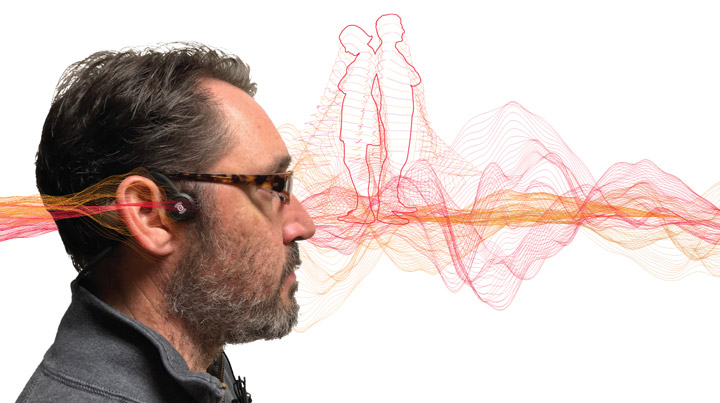Assistant professor's experimental production chosen for international festival
Matthew Schlief, assistant professor of scenic design, is testing the boundaries in theatre arts.
Schlief marries science, psychology and art in his new production called Morning, Noon, Evening, Night, which will be performed at the Prague Quadrennial in June 2019.
The quadrennial is one of the largest festivals featuring theatrical design and architecture and it only takes place every four years. Schlief applied more than a year ago — out of more than 1,000 applicants his production was one of just 26 chosen.
“We’re also the only one representing the U.S. which is fantastic!” Schlief said.
The performance is site-specific, which means Schlief has selected a specific location in the city of Prague for the June performance, since the location will have a direct impact on the performance and the audiences’ experience.
“It’s going to take place in a park near the main palace in Prague,” Schlief said. “We will do the performance four times daily from June 13-15, for 12 total performances, at 6am, noon, 6pm and midnight. We chose those times because what’s going on in the park will be different for every audience member. Sometimes it’ll be filled with tourists and at other times there may be no one around.”
Audience members will observe a story unfold between two people in the twilight of their relationship while Schlief projects a sound design into their ears via bone conduction headphones. These headphones use microvibrations that allow individuals to hear sound through the vibration of the bones in their face rather than their outer and middle ear.
“Your ears are hearing everything normally, but we are sending in the thoughts of the actors in whispers and sounds, so you also hear what they’re thinking,” Schlief said.
While the story might not have a significant conflict, the most fascinating part for Schlief is for people to hear how other people think. The project’s purpose is for audience members to leave and become introspective about who they are, what they think and what’s going on in their minds.
“It’s an experiment. I don’t know if it’s going to be successful. I don’t even know if people are going to like it but, especially in the arts, we have to try,” Schlief said.
